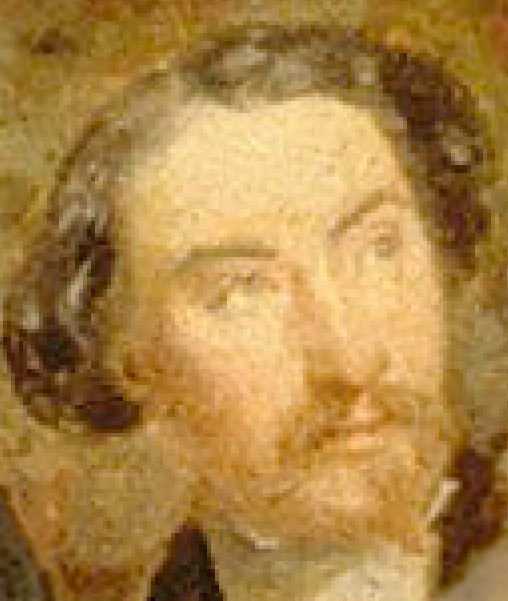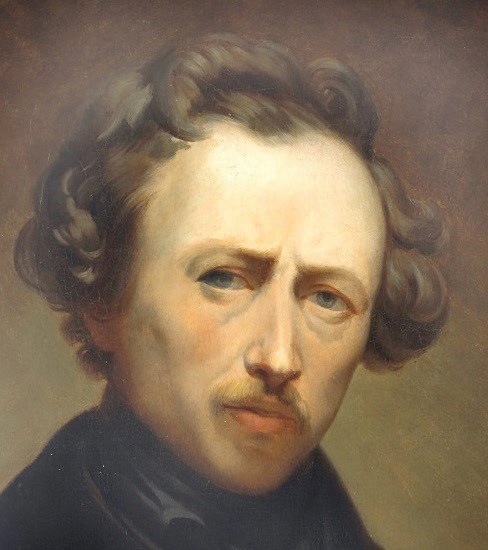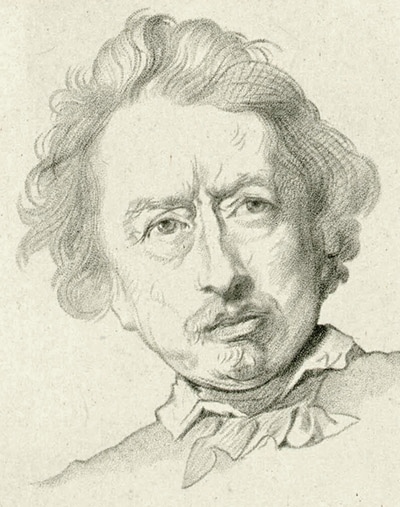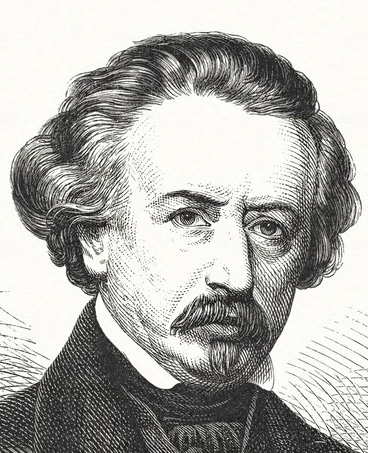Ary Scheffer (1795-1858), painter
1st image: Soirée; 2nd: auto portrait (1838); 3rd: by Lehmann (1849); 4th: litho based on Reutlinger (c.1858). (Alternative: Seligmann)
Born in Dordrecht, Holland (which was part of the French Empire at the time), Ary Scheffer attended the Amsterdam drawing academy from 1806 to 1809. He moved to Paris in 1811 to study with Guérin, but did not conform to the traditional French Romantic painting style.
Like Ingres39, whom he admired, he was inspired by the work of Raphael, but focused on the expression of the painting, as his good friend Delacroix10 did. ‘Sentimental’ was the word that some critics used.
Despite the critics, Scheffer's works were immensely popular, competing in popularity only with those by Ingres.
Commissions by King Louis-Philippe and his interest in politics, literature (Dante, Goethe, Lamartine) and music brought him into the highest levels of French society, where he became close friends with Franz Liszt50b, Frédéric Chopin and George Sand.
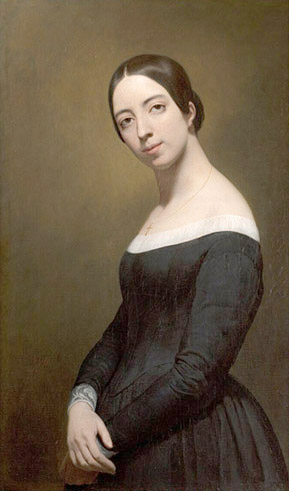
by Scheffer
Like Berlioz, Gounod, de Musset73, and Sand, Scheffer was enamored with famous mezzo-soprano and Liszt-protegé Pauline Viardot. Viardot's husband, Louis, was Scheffer's best friend, so the love with Pauline never materialized.
Besides paintings with religious subjects, Scheffer painted over five-hundred portraits, including vendredi-soirée visitors such as Barrot55, Gounod70b, and Vernet31.
Scheffer was promoted to Commander level of the Legion d’Honneur in August 1848, so should have visibly worn the cravate rouge here, like nearby Ingres and Fortoul46. However, he refused the promotion because it was awarded (likely on recommendation by his military commander Lawoestine42, standing next to him) for his military duties in the 1848 revolt, not for his artistic qualities.
To the disappointment of the press, Scheffer did not participate in the Salon of 1855. Several journals stated they would have loved to see more work of this
" great sun, illuminated by the radiant and luminous rays from his canvases, let him appear, to apply for immortality!"
Writer Ernest Rénan27 married Scheffer's niece in 1856. They joined Scheffer and his wife Sophie Marin in their house and atelier in rue Chaptal, now the Musée de la Vie Romantique, which has one floor dedicated to Scheffer’s life and artworks. Some of Scheffer's later paintings only became known after his death in 1858: a vast crowd visited the exposition of his works in 1859.
Sculpting was for Scheffer what the violin was for Ingres. He transferred this enthusiasm to his gifted painting student Auguste Bartholdi, setting him onto a path towards his masterwork: the Statue of Liberty (in cooperation with architect Viollet-le-Duc40a).
In 1859, a few months after the artist's death, Auguste Bartholdi wrote:
"I am a student of Ary Scheffer and the only sculptor he trained. Since my childhood, he has provided my entire artistic education, […] he has always supported me with his advice, coming to see my work, right up to his last days […] always showing me paternal affection."
The Dordrecht Museum holds the largest collection of Scheffer's works.
